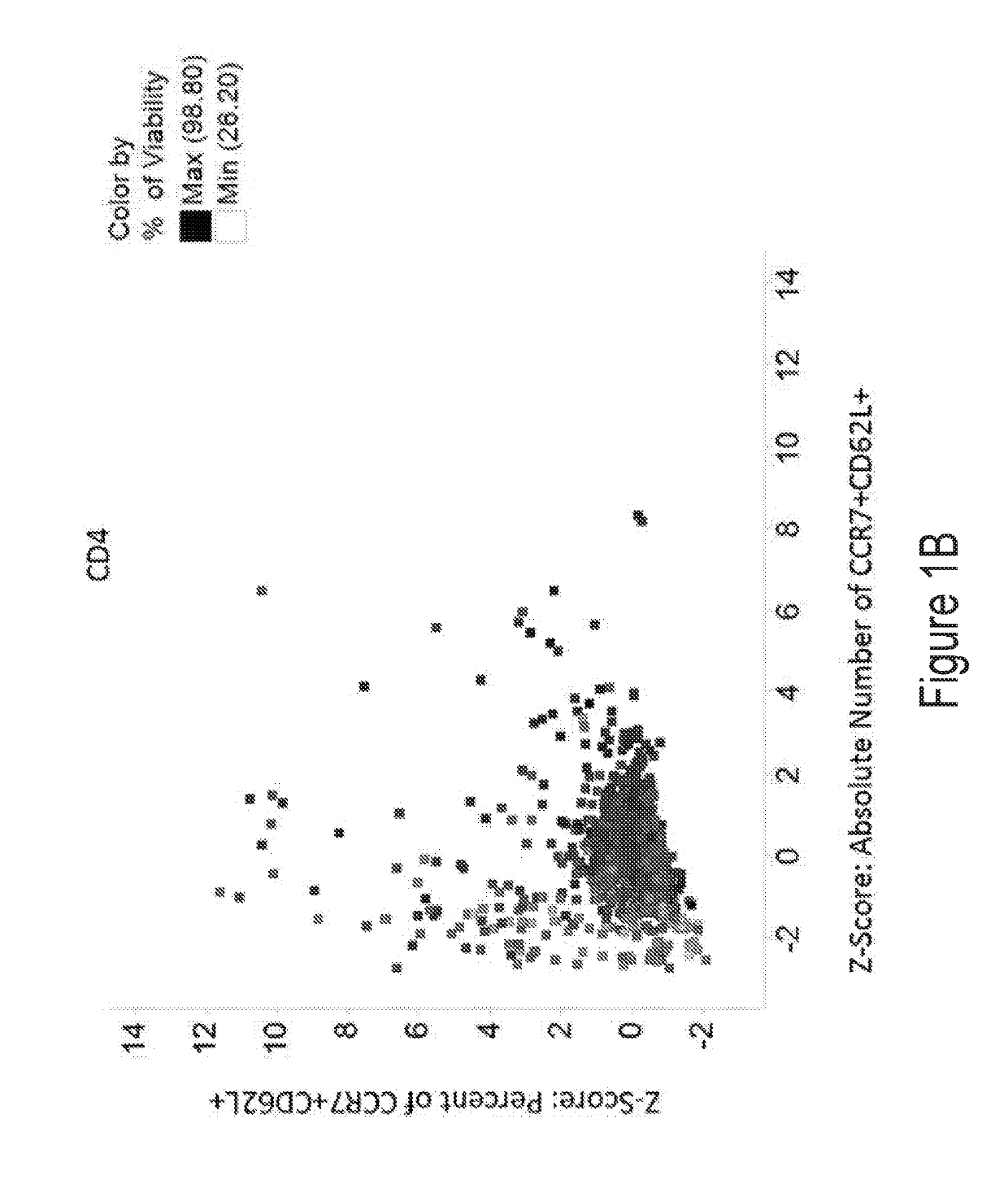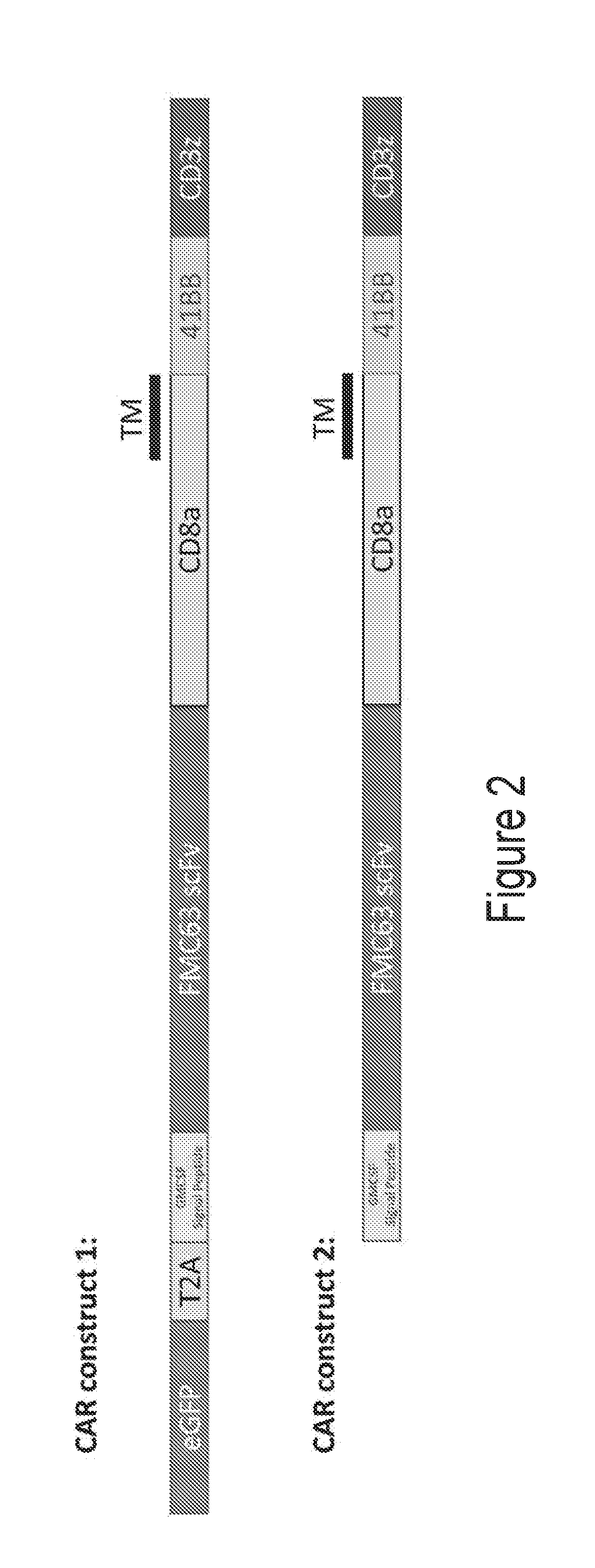Compositions and methods for immune cell modulation in adoptive immunotherapies
- Summary
- Abstract
- Description
- Claims
- Application Information
AI Technical Summary
Benefits of technology
Problems solved by technology
Method used
Image
Examples
example 1
nd Materials
[0199]In Vitro T Cell Culture.
[0200]Fresh leukopaks (AllCells, Alameda, Calif.) were obtained from healthy donors, from which T cells were negatively selected using the EasySep Human T Cell Enrichment Kit (Stem Cell Technologies, Vancouver, Canada). The freshly isolated T cells were aliquoted and cryopreserved. On the day the screens were initiated, T cells were thawed and washed into X-Vivo 15 with 5% human AB serum, IL-2, pen / strep, and additional supplements. Cells were dispensed into flat-bottom 384-well plates at 5×105 cells / ml with anti-CD3 / Anti-CD28 dynabeads (ThermoFisher, Waltham, Mass.) at a 3:1 bead-to-cell ratio. Individual compounds were added at a final concentration of 10 μM to each well from column 3 to column 22 of each plate. Positive and negative controls were added to additional wells. Cells were incubated for about 6 days at 37 degrees with 5% CO2.
[0201]Flow Cytometry.
[0202]On Day 6 of culture, cells were stained with a fixable viability marker and f...
example 2
Immune Cell Modulation
[0205]Data were analyzed to identify compounds that either produced a higher proportion or greater absolute number of phenotypically identified naïve, stem cell memory, or central memory T cells. These cells are characterized by expression of CCR7 and CD62L. Therefore, cells co-expressing both of these identifying markers were evaluated. Within the viable CD4+ population and viable CD8+ population, the percent of cells co-expressing CCR7 and CD62L was determined. The expression of either CD62L or CCR7 on T cells, as indicative of the desired T cell subsets, have been described as having favorable functional characteristics for CAR-T cell therapy, and potentially other adoptive T cell therapies. Under the treatment of dorsomorphin, heptelidic acid, GSK3 inhibitor, 6-Mercaptopurine, AC-93253 iodide, tiratricol, PI-103, 5-Azacytidine, 5,7-dichloro-8-Quinolinol, Nitrofurantoin, 5-chloro-7-iodo-8-Quinolinol, or di ethylenetriaminepentaacetic acid, the number or rati...
example 3
Triage Experiments of the Selected Compounds
[0209]In vitro experiments are performed to optimize methods for compound exposure and triage compounds that have detrimental impacts on T cell functions. Initial tests determine optimal dose of individual compounds while also evaluating whether the impact on naïve, stem cell memory, and central memory T cells observed previously are replicated in additional donors. To triage compounds with potential detrimental functional impacts on T cells, in vitro assessments for proliferative capacity, ability to polarize to Th1 and Th17, survival through a cryopreservation / thaw cycle, transduction efficiency, and tumoricidal activity of CAR-transduced T cells are performed. Compounds that reproducibly improve ratio or number of naïve, stem cell memory, or central memory T cells during expansion without significant negative impacts on T cell function are tested in combination and assessed for additive or synergistic effects. Through these assessments,...
PUM
| Property | Measurement | Unit |
|---|---|---|
| Therapeutic | aaaaa | aaaaa |
Abstract
Description
Claims
Application Information
 Login to View More
Login to View More - R&D
- Intellectual Property
- Life Sciences
- Materials
- Tech Scout
- Unparalleled Data Quality
- Higher Quality Content
- 60% Fewer Hallucinations
Browse by: Latest US Patents, China's latest patents, Technical Efficacy Thesaurus, Application Domain, Technology Topic, Popular Technical Reports.
© 2025 PatSnap. All rights reserved.Legal|Privacy policy|Modern Slavery Act Transparency Statement|Sitemap|About US| Contact US: help@patsnap.com



